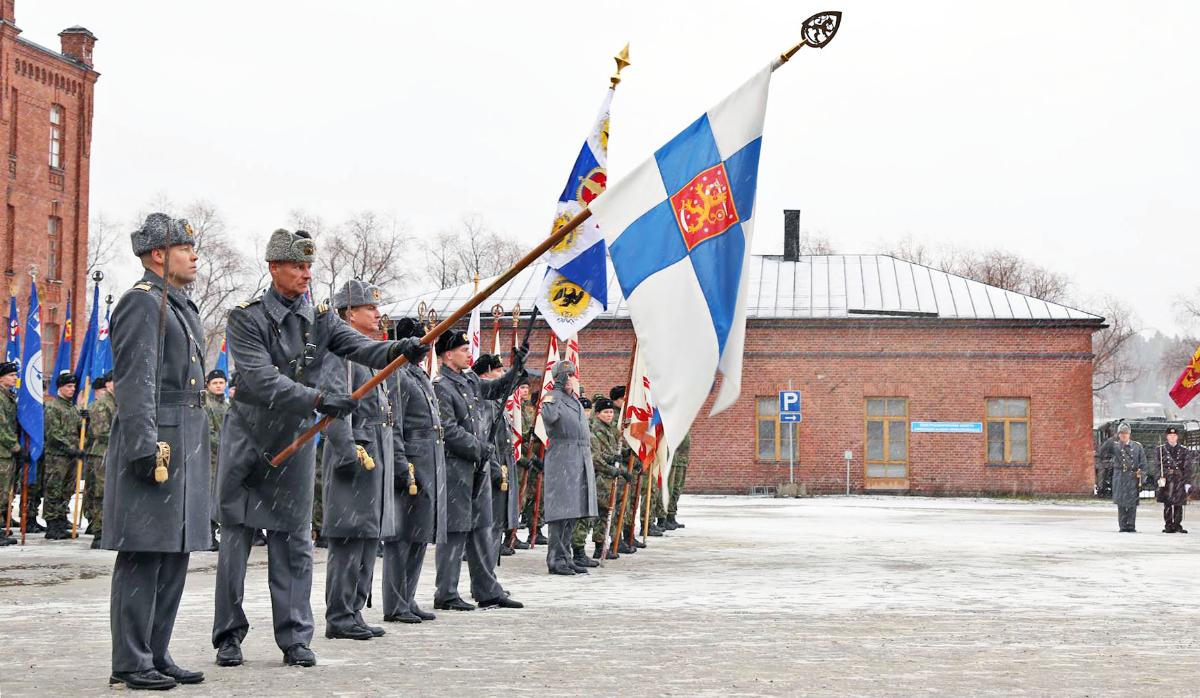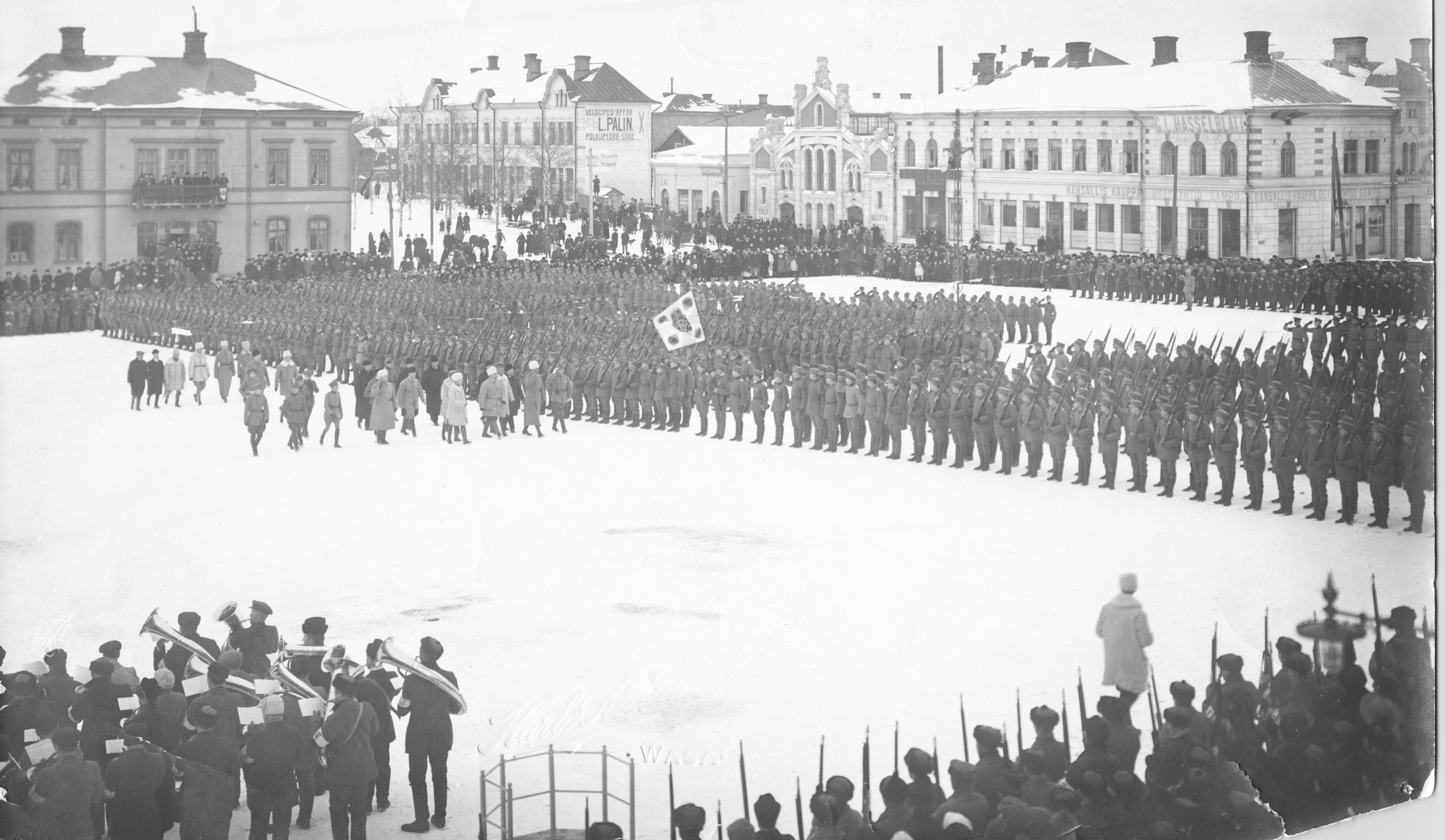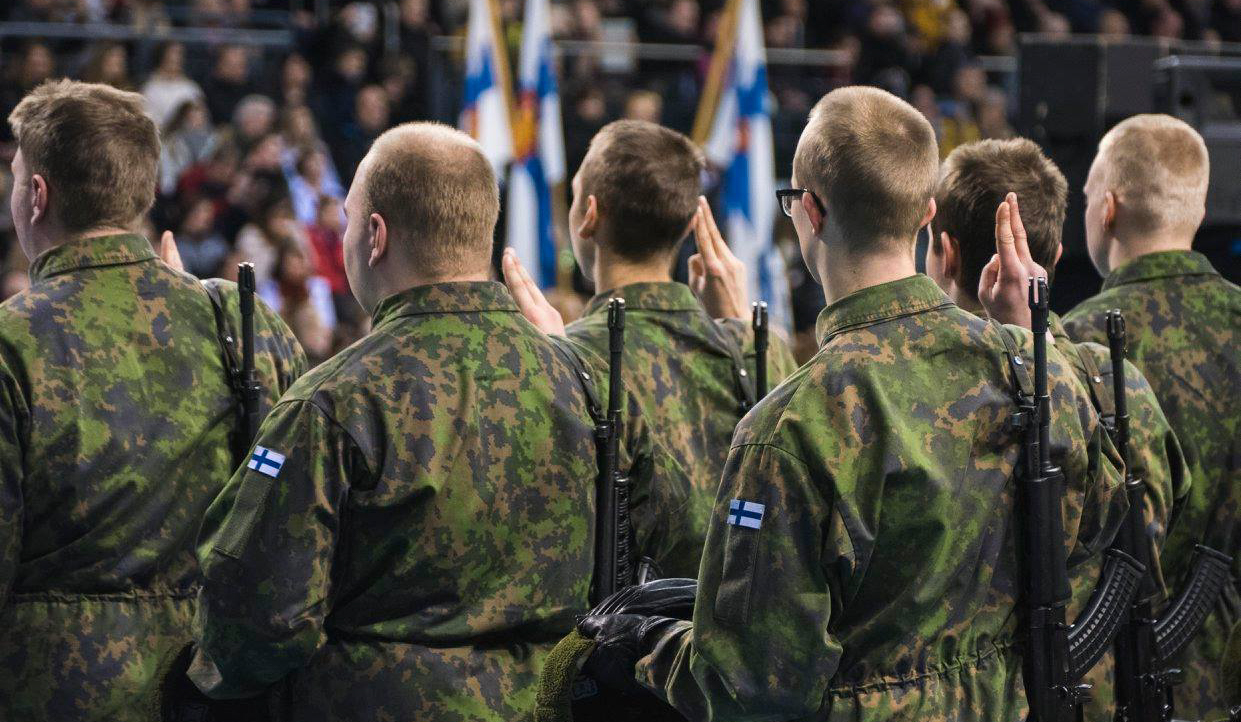Jaegers’ legacy lives on in the Finnish Defence Forces

Finnish volunteers of whom a Royal Prussian Jaeger Battalion 27 was formed to participate in the battles of the First World War as part of the Imperial German Army, the Jaegers returned to Finland in February 1918. During the first decades of independent Finland, Jaegers served in developing the Finnish Defence Forces. Under the Jaegers’ command, the Finnish national defence was developed to a stage that enabled this united nation with its trained reserve to preserve Finland’s independence during the Winter and Continuation Wars as well as the Lapland War. The work carried out by the Jaegers has facilitated the development of the modern Finnish Defence Forces.
In the winter of 1915, the training of Finnish volunteers began in Germany in a unit with the strength of 189 Finns that then, from 1915 to 1916, eventually developed to comprise approximately 950 personnel. In May 1916, this unit was given the name Royal Prussian Jaeger Battalion 27, Ausbildungstruppe Lockstedt, carrying the place name of the training area where the unit was stationed. Versatile in its composition, the training battalion included infantry units, and also artillery, military engineer, signals and cavalry elements. The military training was carried out in accordance with the German system. Initiated with the basics of recruit drilling, the training then proceeded to honing the in-depth skills of a single soldier in practicing firing and combat exercises. Some of the Finns were trained in tasks of section and platoon leaders, and apart from leadership training, instruction skills were emphasized. This in turn reflects in how the Finnish conscript training system that the Jaegers built up centred on the importance of practical training.
In February 1918, the Jaeger Battalion 27 became disbanded in Germany, after which the Jaegers took the military oath before Finland’s internationally recognized government. The following day began the journey home with 950 Jaegers travelling onboard two vessels, the passenger ship Arcturus and cargo ship Castor. Following the icebreaker vessel Sampo, these two ships arrived in Vaasa on 25 February 1918, exactly three years from the start of the military training phase in Germany.

Jaegers serving as developers and instructors in the Finnish Defence Force
During the 1920s, the Jaeger officers assumed significant positions in the Finnish Defence Forces. Forming an essential part of the officers in command duties in independent Finland, approximately 500 Jaeger officers, who had been trained in Germany mostly in tasks of platoon leaders, served in the Finnish Defence Forces. The officer corps of the recently established nation was heavily influenced by examples drawn from abroad, as the own capability of the Finnish Defence Forces was still in its making. However, rather than adopting already existing models as such in use, the overall governing principles were modified to agree with the national specific characteristics.
Meanwhile, from the 1920s to the 1930s, during the first development decades of Finnish national defence, around 700 Jaegers served in key positions as regards training personnel and conscripts in the Finnish Defence Forces and in the Finnish Border Guard. At the start of the Winter War in 1939, both Jaeger officers and soldiers trained in other military establishments formed a significant part of the officer corps. At the time, altogether 1,416 commissioned cadet officers served on active duty constituting some 55 % of the Finnish officers on active duty, although, by then, a total of 1,775 commissioned cadet officers had graduated from the Military Academy.
The Jaegers, who had returned from the battles of the First World War, served as commanding officers in significant tasks in the Winter and Continuation Wars as well as in the Lapland War. For instance, Lieutenant General Lennart Oesch served for the most part of the Winter War in the General Headquarters as Chief of the General Staff and parallel as Chief of Staff as well. Throughout the Winter War, the Karelian Isthmus Army was commanded by Lieutenants General Hugo Österman and Erik Heinrichs. At the wake of the Winter War, all the commanders of the Army Corps and the Divisions were Jaegers. An officer with Jaeger background, Colonel Paavo Talvela achieved with his unit one of the critical wins in the Winter War in Tolvajärvi, as did Colonel Hjalmar Siilasvuo with his unit in Suomussalmi, in the Battle of Raate Road as well as in Kuhmo. Moreover, Major General Woldemar Hägglund commanded encirclement combat, known as "motti" in Finnish, north of Lake Ladoga.
A total of 710 Jaegers participated in the Continuation War, altogether 418 of whom served for a while either in the frontline troops or in the commanding echelons of the field army. In the General Headquarters of the Continuation War, the closest subordinate of the Supreme Commander of the forces of the Republic of Finland was, as of the year 1942, General of the Infantry Erik Heinrichs. Lieutenant General Väinö Valve continued to serve as Commander of the Finnish Navy and Lieutenant General Jarl Lundqvist as Commander of the Finnish Air Force.
Over the course of the 1920s and the 1930s, under the command of the Jaegers, the Finnish Defence Forces had been developed, and its conscripts, reservists and personnel had undertaken training. These forces’ steadfast will to fight and will to defend formed the foundation for the ensuing success in combat.
New forms of operation
On the basis of the First World War and the experiences accrued, two primary forms of operation were established as part of Finish national tactics; namely, offensive and defensive operations equaled the backbone in tactical thinking with principles that were followed through until the Second World War.
In the First World War, the emphasis had been on extensive and down-wearing defensive battles. The Western Front of World War I abounded in stagnated battles that wore down the troops. It was the Eastern Front that formed the theatre of operations in which the Jaegers participated. Spread along a lengthy front line, the battles of the Eastern Front were more mobile in their characteristics than their Western Front counterparts, although during the Jaegers’ front responsibilities, the combat conducted tended to be increasingly static as well.
In the 1920s and the 1930s in particular, with the objective of developing increasingly mobile forms of combat to replace the tiring defensive battle, the Finnish military theory and art focused on emphasizing the offensive tactics that the Jaegers had brought along. The grounds for avoiding the strategy of wearing down opponents and conducting defensive combat had to do with minimizing the use of materiel and collateral damage. Influenced by the Jaeger movement, the military theory and art as well as tactics of the time were characterized by the efforts in developing offensive tactics and operations that were believed to prove to be successful instead of lengthy and exhausting defensive operations. This meant that the enemy freedom of movement had to be denied by means of determined, mobile and quick offensive. Also the notion of delay was familiar and viewed to be most optimal when adjusted depending on the situation and circumstances as part of defensive or offensive operation. However, it was only on the eve of the Winter War that delay assumed the status of a separate form of operation in Finnish operational tactics.
Jaegers’ influence remains tangible
In the 2010s, the influence of Jaegers continues to be evident in a number of ways. The Jaegers’ joint spirit and fairness still equal an instrumental part of the Finnish military culture. The significance of the joint spirit in combat became pronounced in the Winter and Continuation Wars as well as in the Lapland War in the principle of "leave no man behind". The soldiers put the interests of Finland before their own interests.
The Jaeger Flag, the first unit colour of independent Finland was consecrated prior to the homecoming of the Jaegers at the Holy Trinity Church, St Trinitatis, in Liepaja, situated in current-day Latvia. In the national parades of the Finnish Defence Forces, the Jaeger Flag follows the Swallow-tailed State Flag. In conjunction with the consecration of the colour, the Jaegers as the first Finnish soldiers took the oath before Finland’s internationally recognized government. The formulation of the military oath still continues to take after the first Finnish military oath sworn a hundred years ago.

The Finnish Defence Forces’ military rank structure, rank insignia as well as the uniforms bear witness to the legacy of the Jaegers. In February 1918, in conjunction with the disbanding of the Jaeger Battalion 27, a high number of Jaegers ended up being promoted to officers and non-commissioned officers of the Finnish armed forces. Prior to leaving for Finland, it was then time to determine which the ranks would be to be used in Finland. Thus from the very start, the system adopted was based on one proposed by Jaeger, Hauptzugführer Erik Jernström that rested on the service rank acquired while serving in Germany as well as the training undertaken and personal merits. Yet the original proposal by Jernström was modified with the end result featuring several influences, the most significant of which was to attach the indication of rank on the collars of the service uniform coat. Also the Finnish military service uniform sports German features in its tailoring, model types, fabric, colours, and style. These influences were brought along by the Jaegers as well, and over the course of the decades they, too, became a fixed part of the Finnish military tradition.
Similarly, the lasting impact of the Jaegers is still discernible in the Defence Forces’ regulations as well as in the sequencing of the phases of conscript training.
Lieutenant Colonel Marko Palokangas
Commander of the Kainuu Artillery Regiment
Doctor of Military Sciences
Celebrating the 100th Anniversary of the Homecoming of the Jaegers in Vaasa and Helsinki form 23 February to 26 February 2018
Fri 23.2. at 12–18 and Sat 24.2. at 10–15 Equipment Display in the Old Garrison Area
Fri 23.2. at 19–20.30 Concert by the Staff Band of the German Armed Forces, Stabsmusikkorps der Bundeswehr, at the Vaasa Church
Sat 24.2. at 11 Review of Troops at the Market Square
Sat 24.2. at 12 Pass in Review by Vaasanpuistikko towards the Jaeger Statue
Sat 24.2. at 12.30 Air Show off the southern city bay, weather permitting
Mon 26.2. at 19–21 Concert by Stabsmusikkorps der Bundeswehr at the Temppeliaukio Church in Helsinki
Both the review of troops and pass in review may also be watched live on Yle Areena as well as on the Facebook page of Yle Pohjanmaa. Learn more about the events here.



